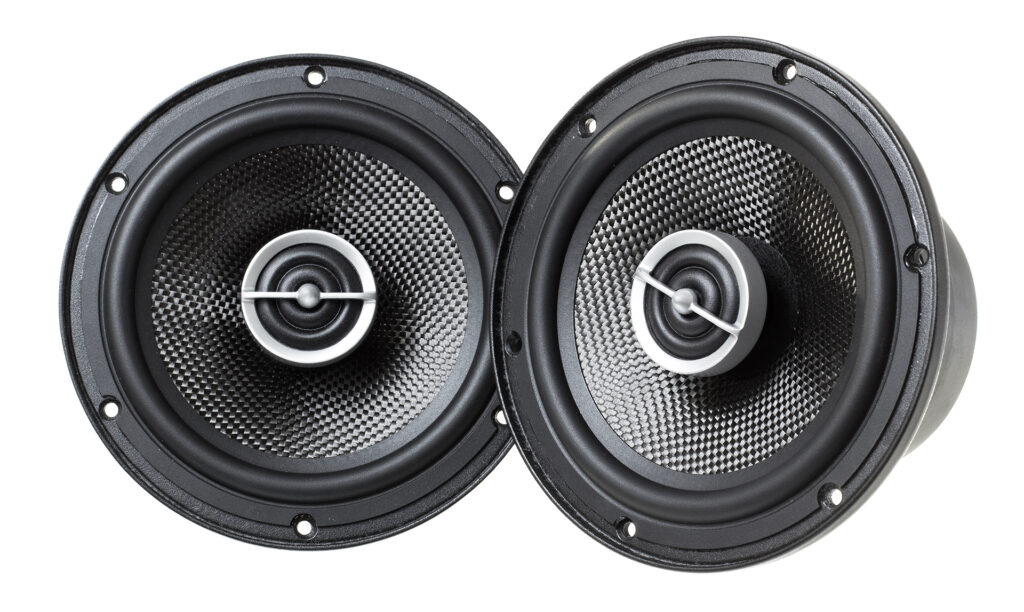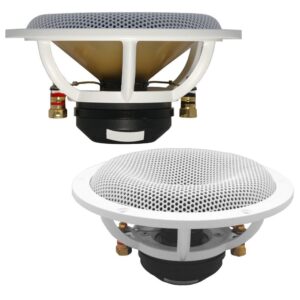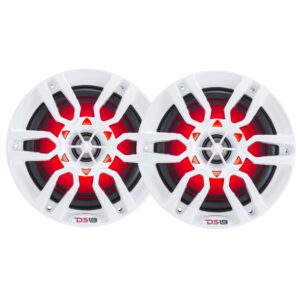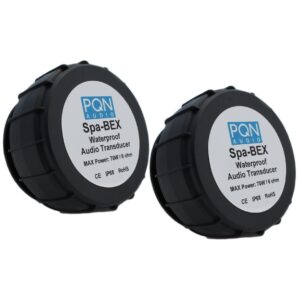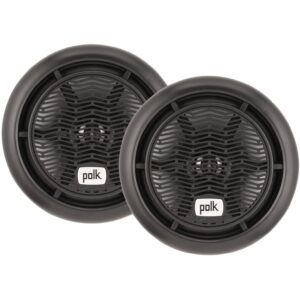Here is a rundown of all the most important considerations when choosing speakers for your boat.
1) Marine Speaker Installation Size
When you are doing a speaker replacement in your boat the first rule to keep in mind is that there are no standard sizes for the best marine speakers. Even if it seems like there are, believe me, there really aren’t! The measurement that a manufacturer publishes as the speaker size is typically the diameter of the cone inside, but that does not guarantee the diameter of the grill or the diameter of the cutout hole. The ugly truth is that each manufacturer has a slightly different installation size. For example, a JBL 6 1/2″ speaker will have a different cutout diameter than a Magnadyne 6 1/2″ speaker. This can make finding replacement speakers painful! The bottom line is that you can use the cone size to get you in the ballpark, but you definitely need to pay attention to all the measurements to be sure the speakers you are considering will fit.
New installations have their own set of challenges. Since larger speakers generally have better frequency response, it is a good idea to try to fit in as big of a speaker as possible. However, keep in mind that a speaker will always have a grill larger than than the cone so make sure you have adequate space available. For example, a 6″ speaker may have a grill that is 7 1/2″ in diameter so you will need to plan accordingly.
Another issue with flush mount speakers is the need for adequate mounting depth. You will need to make sure there is enough space behind the speaker to accomodate the magnet and cone. Refer to the mounting depth measurements when purchasing to make sure the ones you are ordering will fit. There isn’t a whole lot you can do if there is not enough depth available.
Consider also, that any flush mount speaker will require enclosed airspace behind it in order to maximize the resonance. Speakers with the magnets hanging out in open air will sound tinny and weak. Full enclosure is not required, but you definitely need something back there. If you are having trouble, we have speaker back enclosures that can help maximize your installation.
If you can’t find a good spot for flush mount speakers you may consider box speakers instead. Box speakers take up more space, but they can be more easily mounted up high, which is the optimal position for sound quality. They also come with a box for an enclosure so you don’t need to worry about that.
Considering your size limitation will help narrow down your choices a lot and you can move on to the next criteria for making your decision.
2) Power Handling
As a rule of thumb you want your speakers to be able to handle an equal amount or more power than your stereo or amplifier can provide. That way you avoid blowing them out. This can be a little confusing because manufacturers measure power in different ways. For example, a typical stereo head unit will be rated at 200 watts of peak power. But that does not mean that your speakers have to be able to handle 200 watts. The head unit will probably have 4 channels so that 200 watts needs to be divided by 4 since the most power the stereo can produce on any one channel is 50 watts. A 50 watt speaker will work fine.
Confused yet? It gets worse!
Power is not only measured in peak wattage (the amount of power at any given instant) but can also be measured in RMS or continuous wattage (the amount of power averaged over time). Peak wattage sounds better because the number is always higher, so sometimes manufacturers will omit the RMS wattage. But RMS is actually more important. Fortunately, manufacturers of higher end speakers usually provide both types of wattage numbers because they are critical when using your speakers with an external amplifier. Naturally, the higher the power, the more important it is to know what your speakers can handle.
3) Boat Speaker Quality
So once you have an idea of the size of the speakers you are looking for and the power handling you need for your setup, the last thing to consider is the quality of the speaker. There are a number of types to consider:
- Dual Cone These speakers are generally the least expensive and also the lowest quality. A dual cone speaker only has one speaker driver with 2 cones to reproduce the sound. The smaller cone makes sure the higher frequencies are being reproduced while the larger cone ensures that there is bass and midrange. This works OK, and you can find some good quality dual cone speakers, but you can usually do better.
- Coaxial These are often called 2 way or 3 way speakers. The term “coaxial” comes from the fact that it is actually one speaker wrapped around another. Typically you have a tweeter positioned in the middle of a woofer cone with a completely separate driver. The frequencies are divided up amongst the speakers by a device called a passive crossover.
This works significantly better than the dual cone setup discussed above, but they are also usually more expensive. Another drawback to this configuration is that since the speakers are attached to each other so closely, their vibrations will sometimes interfere with each other and create what is called cross phase distortion. Don’t let this panic you. It takes a very discerning ear to hear cross phase distortion and in most cases it would take an audiophile to detect it.
In fact, because of the high sound quality and reasonable prices, coaxial speakers are probably the most popular type used in mobile applications.
- Component These are very similar to coaxial speakers except the tweeter is completely separated from the woofer cone, thus eliminating cross phase distortion. Any time you see tiny tweeters mounted by themselves you are looking at a component speaker system. Also, most box speakers use a component setup with the tweeter on one end and a woofer on the other. As you might expect, component speakers are usually more expensive than coaxial speakers.
- Subwoofers To enhance the overall sound quality of your system, you might choose to use a subwoofer. A subwoofer is actually just an extension of the component speaker configuration discussed above. You are simply adding yet another speaker to handle the lowest frequencies. You would NEVER want to use a subwoofer alone because the result would sound like mud.
A subwoofer can provide serious thump to your music, but you will need to power it sufficiently and that can require quite a bit of amplifier power. A stereo head unit alone will probably not be enough. If you don’t give your sub enough power you might as well not even use one because you won’t be able to hear a difference.
Another good application for a subwoofer is a situation where you can only fit small speakers in your boat. Adding subwoofer under a seat or in another location down low will provide rich body to the overall sound that small speakers can’t produce.

